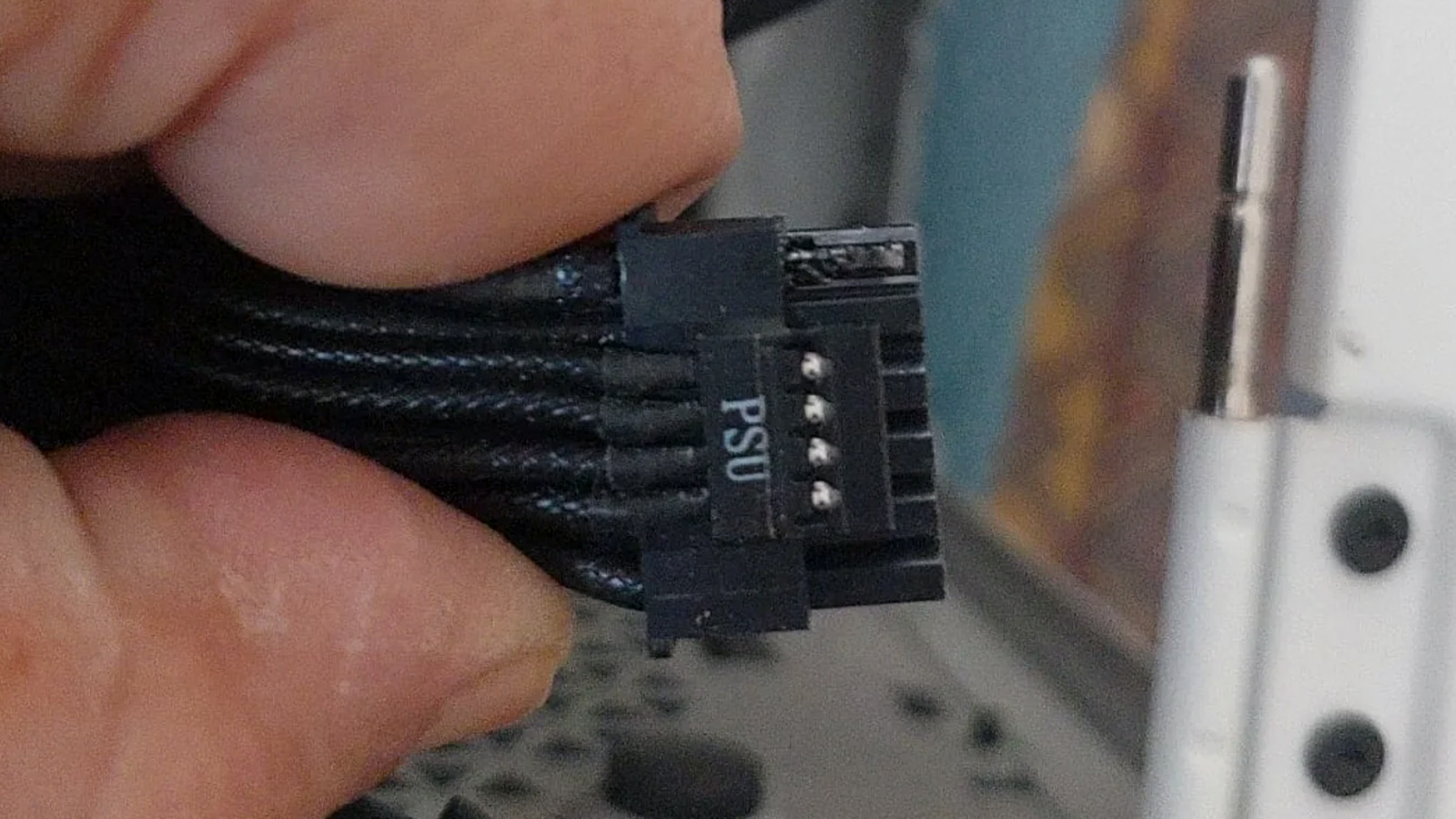Nvidia’s RTX 5090 and 5080 GPUs are facing serious melting connector cables issues, a repeat of the incidents involving RTX 4090 GPUs which the company has previously claimed has already been addressed. However, the number of reports surfacing in recent weeks suggest that that is not the case, so hardware testing group Hardware Busters is proposing two solutions: embed an over-temperature or over-current protection circuit (or both) in the 12V-2×6 cables used by these high-powered GPUS.
Hardware Busters is headed by Aris Mpitziopoulos, who’s also the CEO and Chief Testing Engineer of Cybenetics and established the Cybenetics PSU Certification Program. He has also worked with Tom’s Hardware as a contributing editor for Power Supplies.
According to Mpitziopoulos, one approach is to attach thermistors to the six 12V gauges on the GPU side so that if any particular wire exceeds the given temperature, it should cut the power and prevent damage to the GPU. While this could work, it won’t protect against failures originating from the PSU side, like this melted RTX 5080 cable, which failed under normal load. The other proposed solution would attach current shunts to monitor the amperage that each wire carries. If it detects more than 12 amps for over three seconds, it will open the circuit and cut the power to the GPU, potentially saving it from damage.
ASRock & FSP might found a way to save you from MELT GPU Connectors! Let’s Test it! – YouTube
Watch On
He said that the best solution is to have both types of protection on the cables, but that will certainly drive production costs up. Nevertheless, if you’re already spending over a thousand dollars for an RTX 5080 or twice that for an RTX 5090, then spending a little bit more to protect your investments shouldn’t really matter.
This isn’t the first solution that we’ve seen for this melting problem. Some manufacturers like MSI and Zotac have taken steps to ensure that users avoid loose connections by adding a yellow-tipped marking or a safety light. Asus even added per-pin current monitoring on its top-of-the-line RTX 50 Astral model to ensure that you’re warned if your GPU is entering dangerous territory. One Redditor even suggested adding 10-amp car fuses to the cable to prevent it from going over-spec.
Guys I solved it from r/pcmasterrace
However, while some may attribute the melting RTX cables to user error, others are saying that the design itself is deeply flawed. They say that the 12V-2×6 cables seem too thin for the amount of power these brand-new GPUs require and that thicker cables are in order. We hope that the companies involved come up with a standard solution to this problem sooner rather than later. After all, even if consumers are a much smaller slice of Nvidia’s revenue now that AI GPUs are making billions of dollars annually, we’re still an essential part of its history.
